11 True Stories That Prove Real Life Doesn’t Need a Screenplay

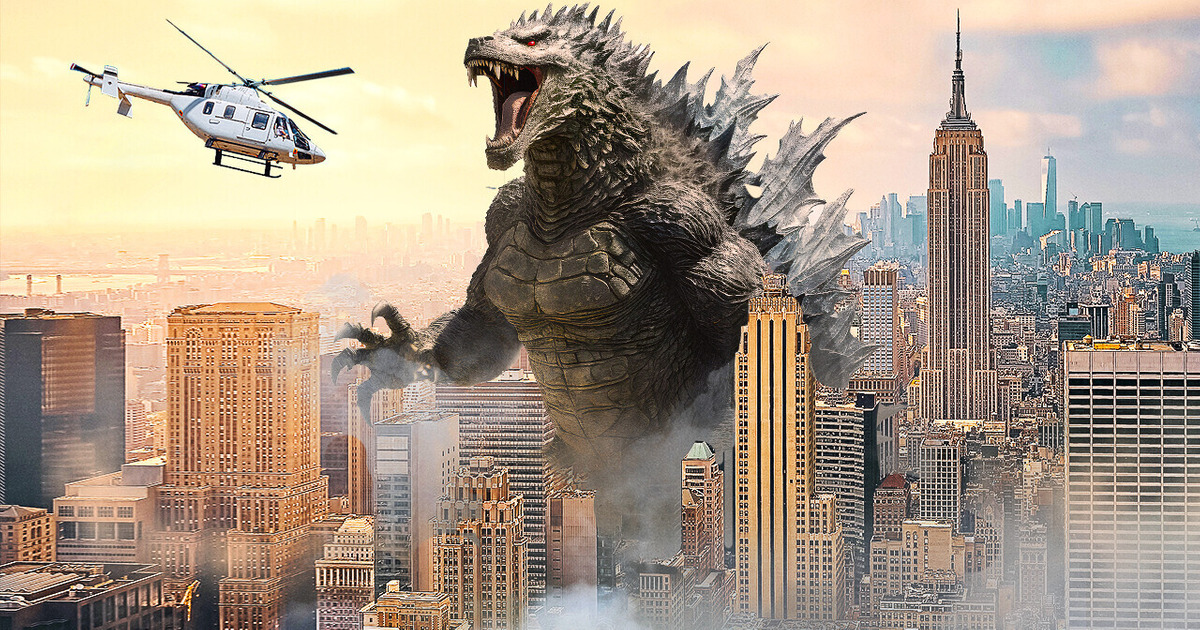
Wait, don’t tell me that life on Earth has bubbled for about 3.5 billion years, and the biggest creature we got is the blue whale? I mean, not bad, but that doesn’t sound nearly as fun as those cool giant creatures you get to see in movies.
Yeah, you recognize the iconic roar here. It appeared on TV, in comic books, in video games, and in cinema. I mean, c’mon, it even got its own star on the Hollywood Walk of Fame on its 50th birthday [2004]. So... What would it take to get good old Godzilla from the TV screen to our streets?
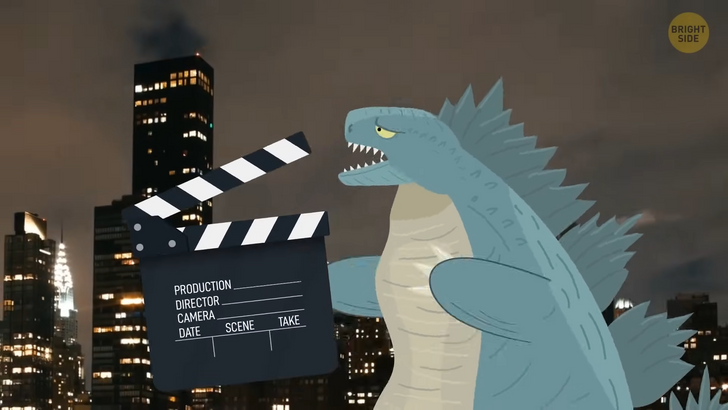
And we’re talking about the beast that’s really gigantic. In the original film from 1954, Godzilla was thought to be 164 feet tall. This was the perfect height for the monster to just peer over the biggest buildings in Tokyo at the time. But as further movies came, Godzilla became bigger and bigger.
In theory, this would be the biggest animal that could exist and not end up crushed by the gravitational field of our planet — even if we’re talking about some “tiny” Godzilla of, let’s say, 14,000 tons. To take the gravitational force of our planet and carry such weight, Godzilla must have some incredibly strong bones. And as an object gets bigger, its volume will actually increase faster than its surface area.
Okay, wait, let’s start small. So, cells are the building blocks of life, and they come in all shapes and sizes. But the thing is, cells have a problem when they try to grow too big. As they grow, their surface area — the outside — doesn’t keep up with their volume — which means the inside. It’s like having a big mouth but a tiny stomach — you can’t digest all the food you want to eat. Why haven’t I learned that already, especially when I open my fridge for a midnight “snack”?
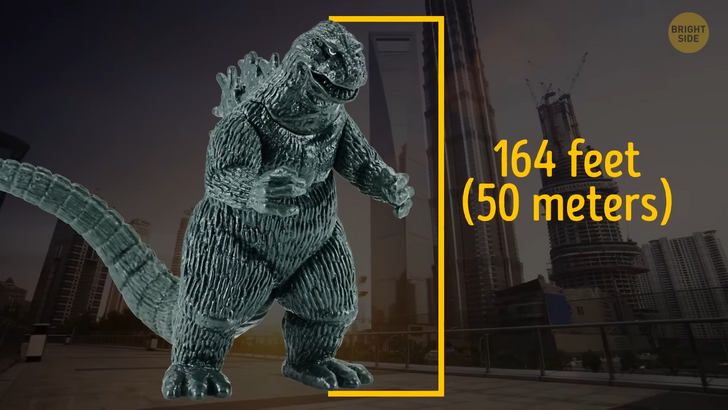
So, if cells get too big, they can’t get enough nutrients in and waste out fast enough. It would be like living in a very big house but with just one tiny door to go in and out. Plus, that’s not their only problem. Cells also need to be able to divide and replicate — and this task gets tricky as they get bigger. They need this thing called microtubules for that. It’s sort of like a skeleton that gives them structure.
But don’t worry, evolution is a foxy little thing. There are some cells out there, like a specific type of invasive algae [Caulerpa taxifolia], that have found ways to break the rules and get really big — and they don’t even need to divide to do that. This alga could pass as an aquatic fern that has fronds up to 31 inches long, but what you’re looking at is just one big cell.
It has multiple nuclei though, which are like the control centers of cells. Plus, there are even some bacteria that are living in a symbiotic relationship with the organism, which means they help each other out when necessary. It’s like having a bunch of different rooms inside one big house — with some roommates living there that help around from time to time!

Then there’s a monster alga known as the sailor’s eyeball [Valonia ventricosa], which is like a giant ball of green slime. It can grow up to 2 inches in diameter but is also considered to be just a single cell.
My personal favorite would be this one [Acetabularia]. Again, we’re talking about a single cell. But check out its stem and cap — it looks like a tiny little umbrella! It can grow up to 4 inches tall, which is definitely not bad for a single cell! Most cells are too small to see with the naked eye, but these fellas don’t hesitate to break the rules.
Now, when it comes to animals getting really big, there’s a limit to their size. It’s like trying to build a really tall tower — eventually, it will become too heavy, and the base won’t be able to support the weight anymore. Similarly, when an animal gets really big, its bones and muscles have to evolve to support all that weight, and it becomes more and more difficult to do so. In one of the movies, Godzilla was 390 feet tall. At that size, it would be really difficult for its heart to pump blood to its brain.
And if it was a reptile, Godzilla would need to spend all of its time lying in the sun to stay warm. So we’d have to hide in the shadows, hoping some bigger animals that live in warm areas could keep it full. If Godzilla was a mammal, though, it would generate too much body heat and end up cooking itself.
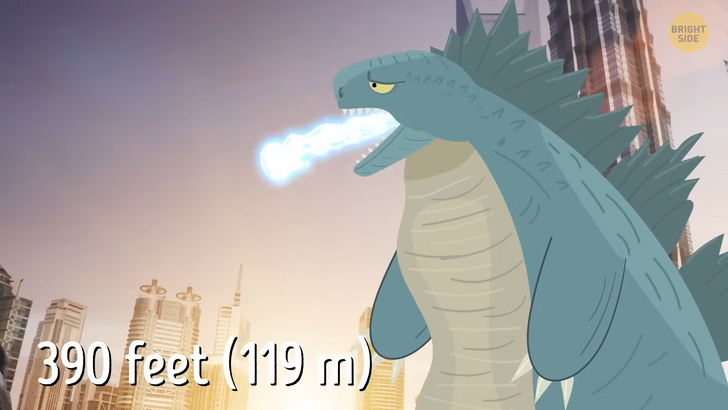
The biggest land animals we know of were sauropods, a type of dinosaur with a really long neck and tail. They could grow up to 131 feet long and weigh up to 70 tonnes, which could be as heavy as 10 elephants! Evolution was pretty efficient when it had to come up with its body plan. Sauropods ate plants. They had a smart way of eating that allowed them to stay in one spot and still find enough food. They could move their long necks around to reach plants, so they didn’t have to walk around too much or waste too much energy. My kind of folks!
That’s impressive, but let’s get realistic — not many giant animals are happy to eat salad for dinner. If you had a giant beast such as Godzilla, you can expect it to go after its prey. And that becomes too hard for its body to support all that weight and perform all the necessary activities.
The largest meat-eating dinosaurs were still pretty big, but not as big as the sauropods. The biggest one we know of is a fella called Spinosaurus, which was about 50 feet long. It managed to survive by eating fish and some other creatures that lived in the water. It would be so cool to have Godzilla in real life — if you have some safe basement where it won’t find you, of course- but it’s not likely some animal could really get bigger than our beloved sauropod — at least not without running into some serious physical limitations.
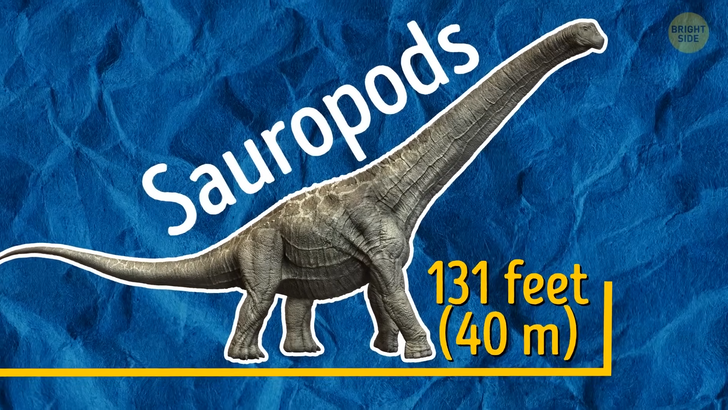
And have you ever wondered how big a plant could get? It turns out some trees have already reached amazing heights, such as the General Sherman, the largest living tree on the planet! It’s more than 275 feet tall and has nearly 53,000 cubic feet of wood! It’s gigantic, but still a little bit smaller than the Lindsey Creek French Tree, the biggest tree ever recorded. It was a coast redwood 390 feet tall and had a volume of more than 90,000 cubic feet — which is as big as some skyscrapers!
But it ain’t easy for plants to get big either. When they’re tall, it’s tricky for them to get water from the roots to the leaves. Redwoods have a couple of tricks up their sleeves though. For example, they absorb moisture from fog through their leaves. Plus, they have a wide base that gives them more support. If we want to build taller buildings, we also need to think about the challenges plants face — like how to build a good base that will support the structure and transport water and nutrients.
If we’re not just looking for height, we can take a peek at other massive organisms on our home planet, such as Pando. This is a male aspen forest in Utah that covers 107 acres and is basically one giant organism! It weighs almost 6,000 tonnes and is one of the biggest organisms on Earth! Perfect salad bowl for Godzilla.
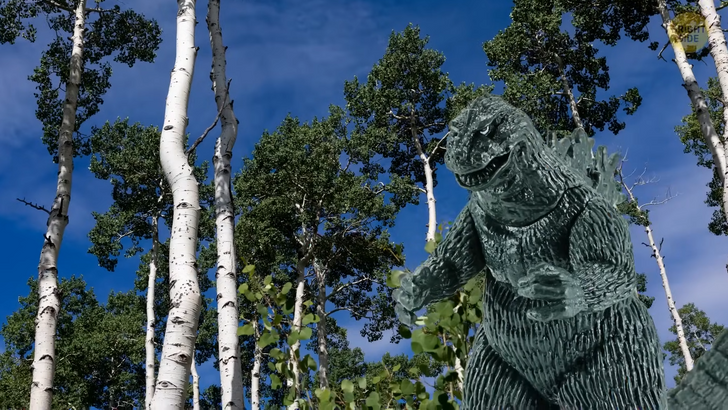
I mean, plants aren’t the only organisms that can grow to massive sizes. There are fungi, like the honey mushroom, that can grow into a network of tiny threads called hyphae. They tend to spread out over big areas. And it’s like a pretty big underground web connecting everything together.
One specimen in Michigan covers 90 acres and weighs about 400 tonnes. Now, that’s a lot of mushrooms!











